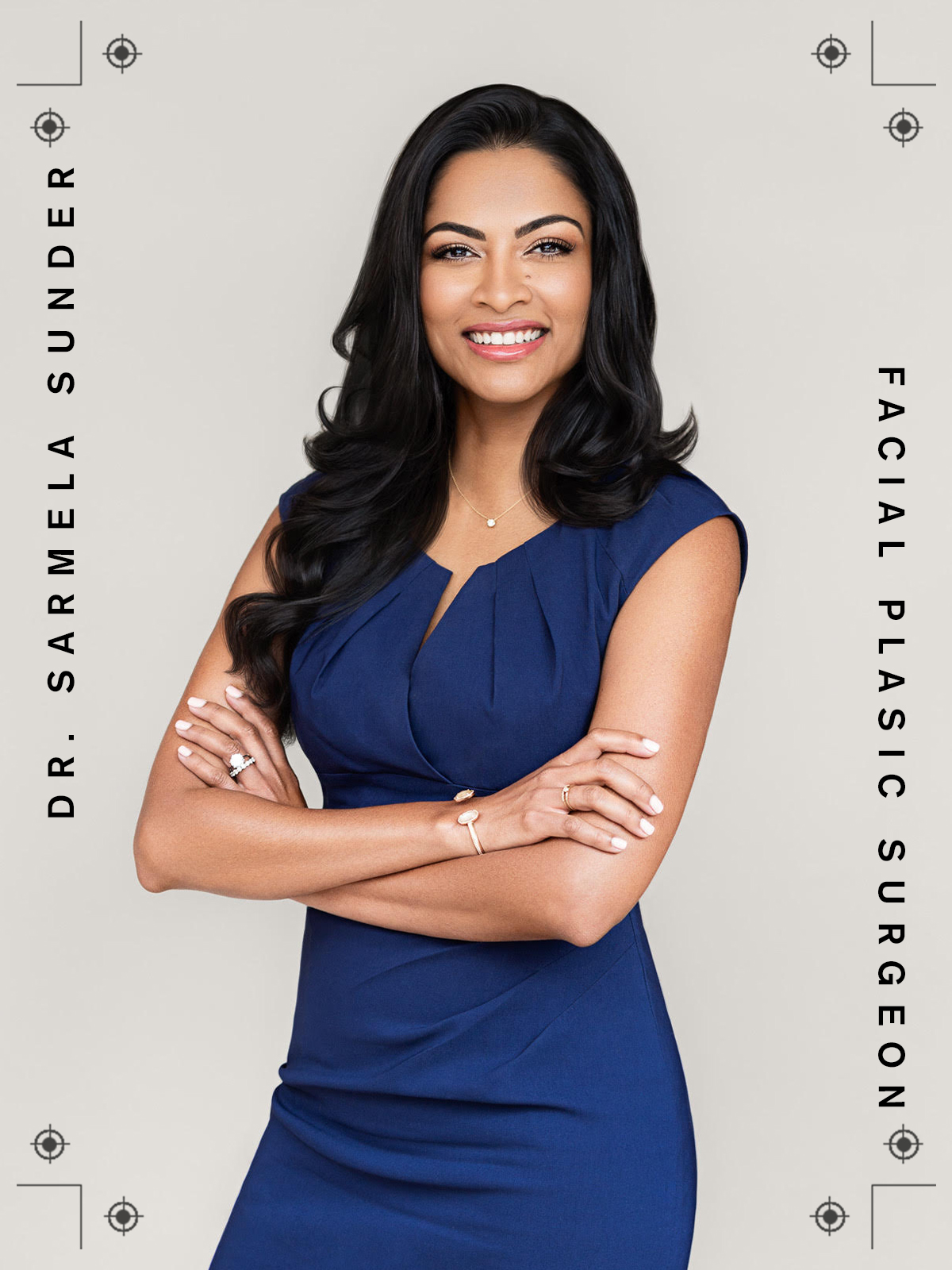This Plastic Surgeon Shares Some of Her Favorite Nonsurgical Procedures

Welcome to our podcast, Who What Wear With Hillary Kerr. Think of it as your direct line to the designers, stylists, beauty experts, editors, and tastemakers who are shaping the fashion-and-beauty world. Subscribe to Who What Wear With Hillary Kerr on Apple Podcasts and Spotify.
Sarmela Sunder, MD, isn't your average plastic surgeon. Sunder—a double board–certified and fellowship-trained surgeon specializing in facial plastic surgery—focuses on natural-looking modifications. "As the pendulum swings from one side to the other in terms of extreme changes to more subtle, natural-looking modifications, it's really beautiful to see how the field in itself is evolving," Sunder said.
Sunder studied at Johns Hopkins University and later continued her medical education at Cornell's Weill Medical College. In her practice, Sunder focuses on everything from face-lifts to rhinoplasty. In the latest episode of Who What Wear With Hillary Kerr, Sunder shares how the field of plastic surgery has evolved since the '80s, her recommendations for nonsurgical procedures, and more.
For some excerpts from their conversation, scroll below.
I'd really love for us to do a deep dive on what the most efficacious options are for a variety of concerns and really get into the differences between surgical and nonsurgical procedures. Since you are first and foremost a plastic surgeon, can we start with the surgery piece of it?
The thing with plastic surgery is that it's been around for a really long time, but there have been lots of new innovations over the past 10 years in terms of techniques. I think a lot of these techniques have existed before, but we're really fine-tuning them. As the pendulum swings from one side to the other in terms of extreme changes to more subtle, natural-looking modifications, it's really beautiful to see how the field in itself is evolving. One of the things that's obviously very popular in my practice is the face-lift and really the resurgence of the modern face-lift.
How is this different from the way it was in the past?
I think what's majorly different from the '80s face-lift is that we have so many other things now. Back in the '80s, we didn't have fillers. We weren't really so keen on fat transfer, so we were using surgery and lifting techniques to account for volume loss. What I mean by that is someone has volume loss in their nasal labial folds—their smile lines—or they have volume loss in their cheeks, but we didn't have a way to replace that volume. So we just tightened it like crazy to make it look like there was more volume to get rid of those folds or to make those cheeks look not as saggy. We were really treating the problem with the wrong solutions. Now, we have so many great options like fillers and fat transfer, where we can replace the volume, so we don't have to tighten like crazy. The results can look more natural. I think that's the biggest difference.
Can we talk about noses? I feel like that has been a whole new frontier—surgical versus nonsurgical. But also, there are benefits and costs associated with both that vary.
As far as nonsurgical rhinoplasty, a little bit of history about that is we used to use nonsurgical rhinoplasty to fine-tune our surgical results. Someone would have a surgical rhinoplasty, and there'd be a little dent, or there was something that the patient changed their mind about, or the surgery may not have been effective in a small area. We would use a little bit of a filling agent to contour that gap. Now, it's come to replace a rhinoplasty in many cases. In patients who have a bump, a visible bump, we can place filler above or below to really camouflage it. We're not truly removing the hump, but we're camouflaging. Anyone that has concerns about their nasal profile, we can pretty much improve with filler.
Can we briefly talk about some of the nonsurgical paths? What actually makes a difference? What is actually worth people's money and pain threshold?
For me, it's really important that a product works but doesn't do something negative to you in the long run. It may look great short-term, but I just don't want it to be harmful for you long-term. We're constantly trying to chase this extra excess fat in our face when we're younger, and then when we get older, we really need that excess fat. It's really important to keep that in mind.
I love radio-frequency technologies. I'm a really big fan of Morpheus. I always tell people, "It is a tool just like a scalpel is a tool. You give 10 surgeons a scalpel, and you're going to get 10 different face-lifts." It's really dependent on the provider. The other thing that I think is amazing and kind of undervalued is micro-needling. Old-fashioned micro-needling stimulates collagen, safe on all skin types. If you do it regularly, you'll definitely see an improvement in skin tone. It's not going to tighten, but the healthy appearance of skin is important.
This interview has been edited and condensed for clarity. Next up, check out our previous episode featuring Hill House Home founder Nell Diamond.